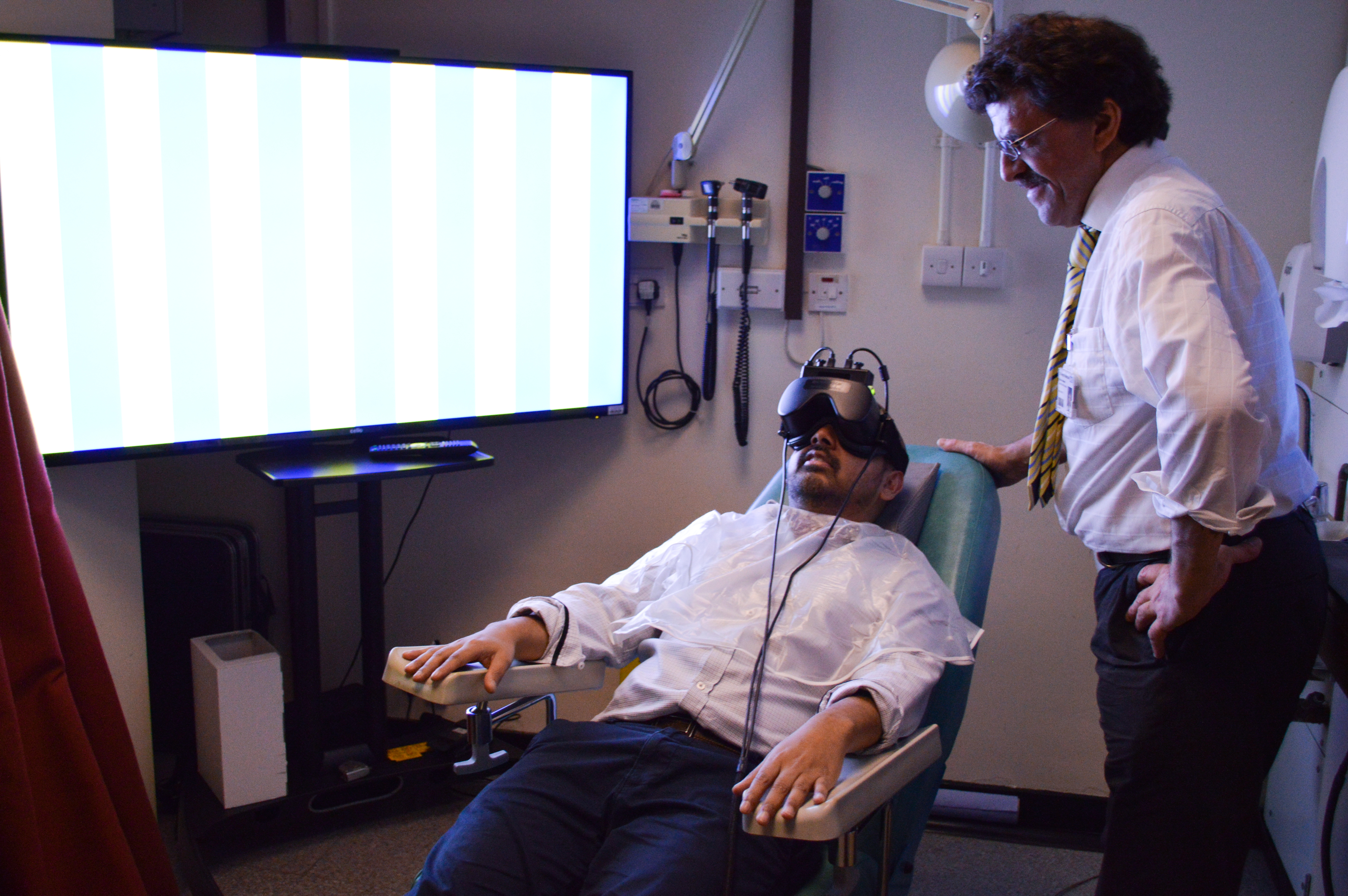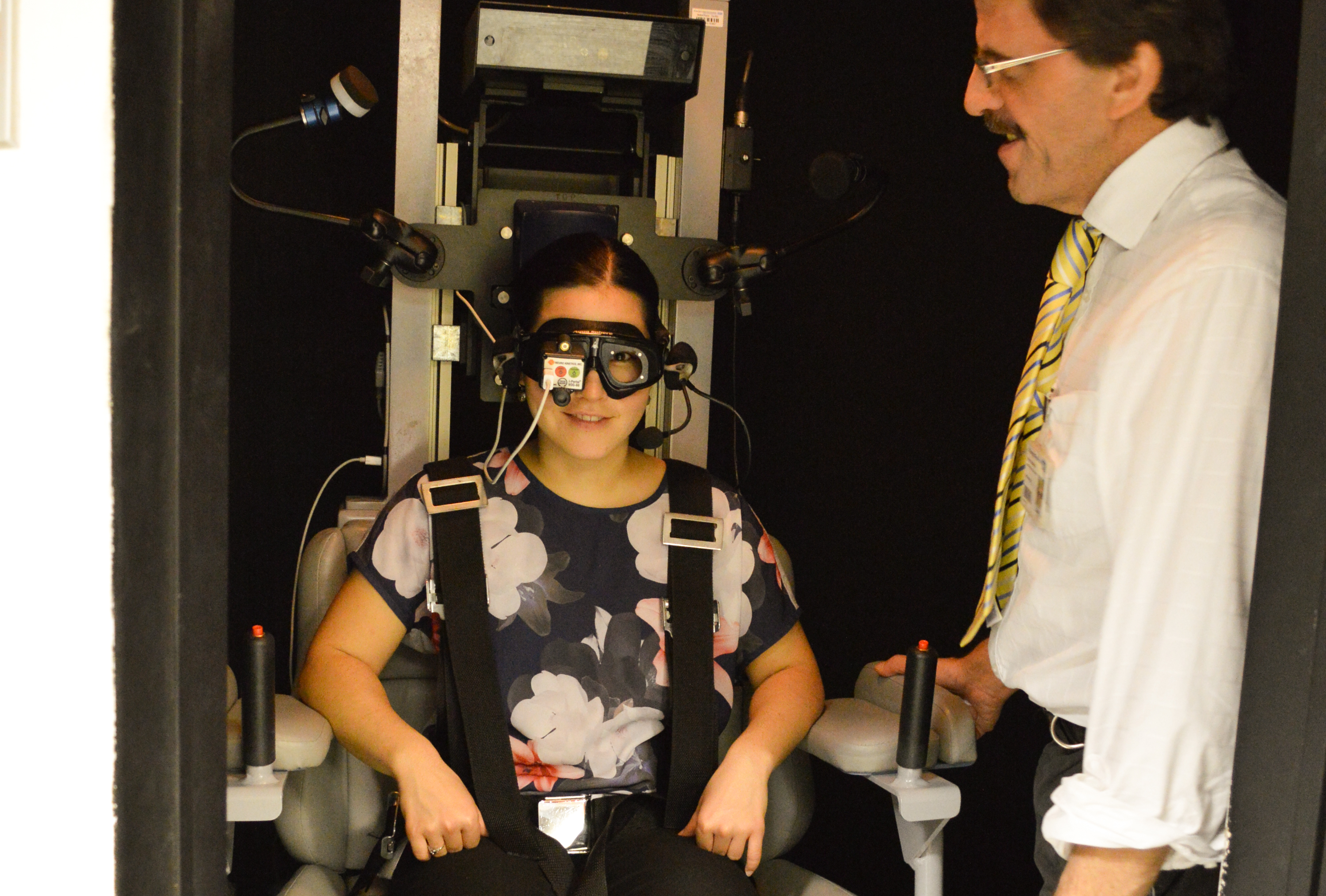Vestibular Function Tests
On this page:
Vestibular function tests are performed to assess the inner ear balance organs and to identify if one or both are working properly.
Part of this will involve close observation and recording of your eyes movements to look for nystagmus.
Kindly refer to the section on Preparing For Your Vestibular Test prior to your appointment.
Video-Nystagmography (VNG)

This is a test of eye movements using video recording or electrodes. The tests will be carried out whilst you are sitting in a chair. Some of the tests are carried out in the dark.
Rotational Chair Tests with VNG

Eye movement recording are sometimes done in conjunction with the chair moving gently from side to side and all the way round. You may also be asked to look at a black and white striped curtain which moves around you.
Caloric Test
In this test each ear will be irrigated (flushed out) with warm and cool water in turn for 30 seconds.
This may be associated with a sensation of dizziness, which will last for no longer than five minutes. This test allows us to establish if there is a difference in the way your left and right ears are working.
The test is performed whilst you are lying on a couch and whilst wearing VNG googles to assess for your eye movements and nystagmus.
Subjective Visual Vertical/Horizontal (SVV/SVH)
You may be asked to perfom this test to evaluate part of your balance system which helps you determine what is up or down.
As part of the test, you will be tasked to set the vertical and horizontal positions of a light bar by using a controller
VEMP Test (Vestibular Evoked Myogenic Potential)
This test helps to test part of the inner ear balance organ known as the otolithic organs. Three electrodes are attached: One on the forehead, another to the neck muscle, and the third on the collar bone.
You will be asked to lie down on a couch in a quiet room and listen to some clicking sounds via headphones.

